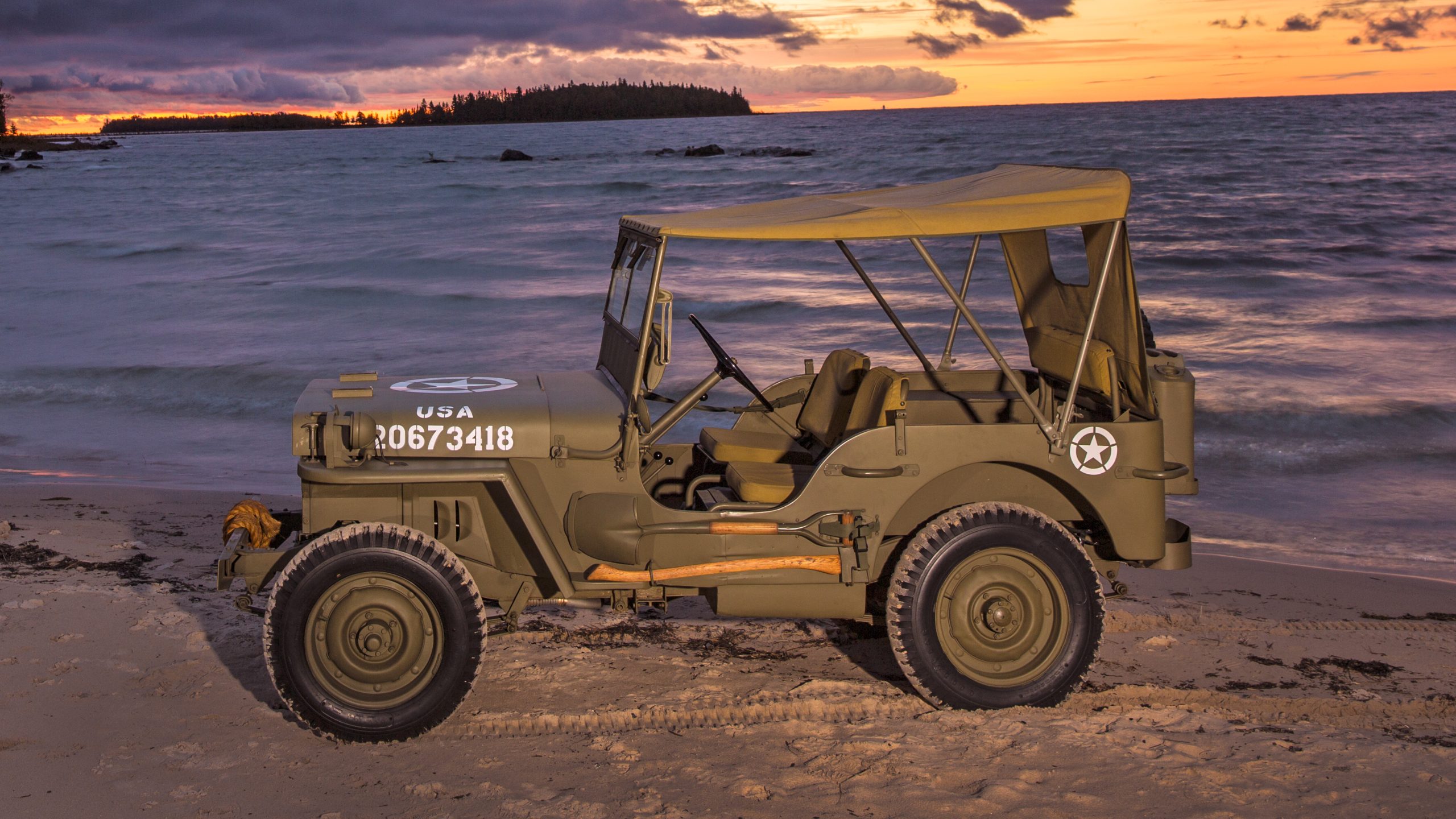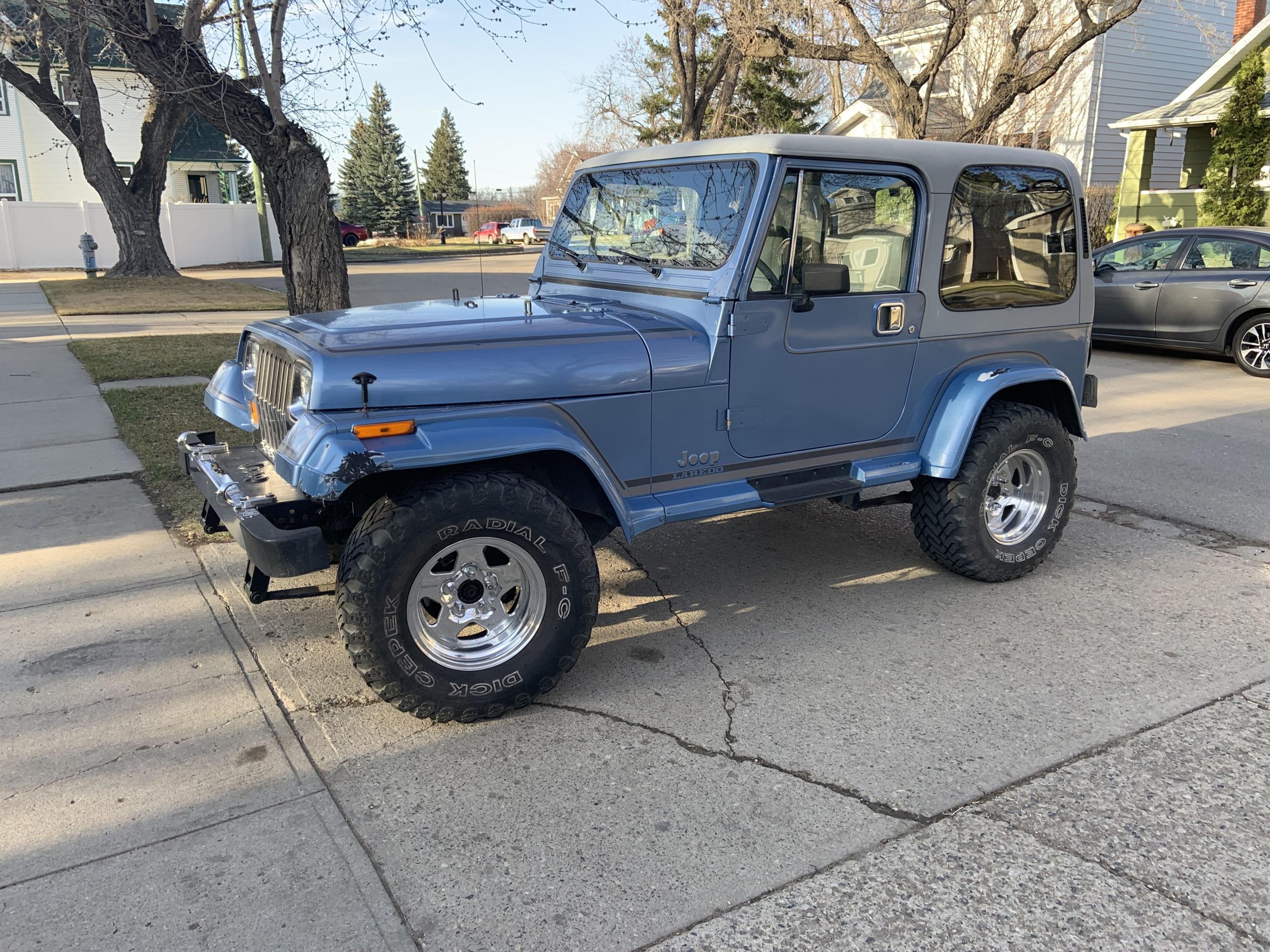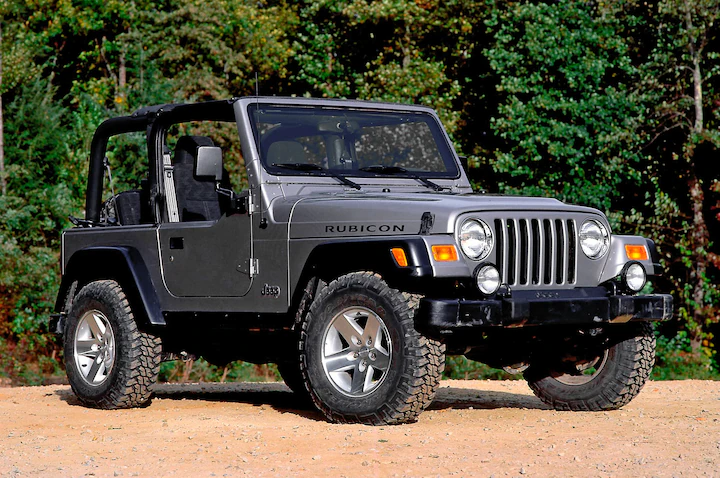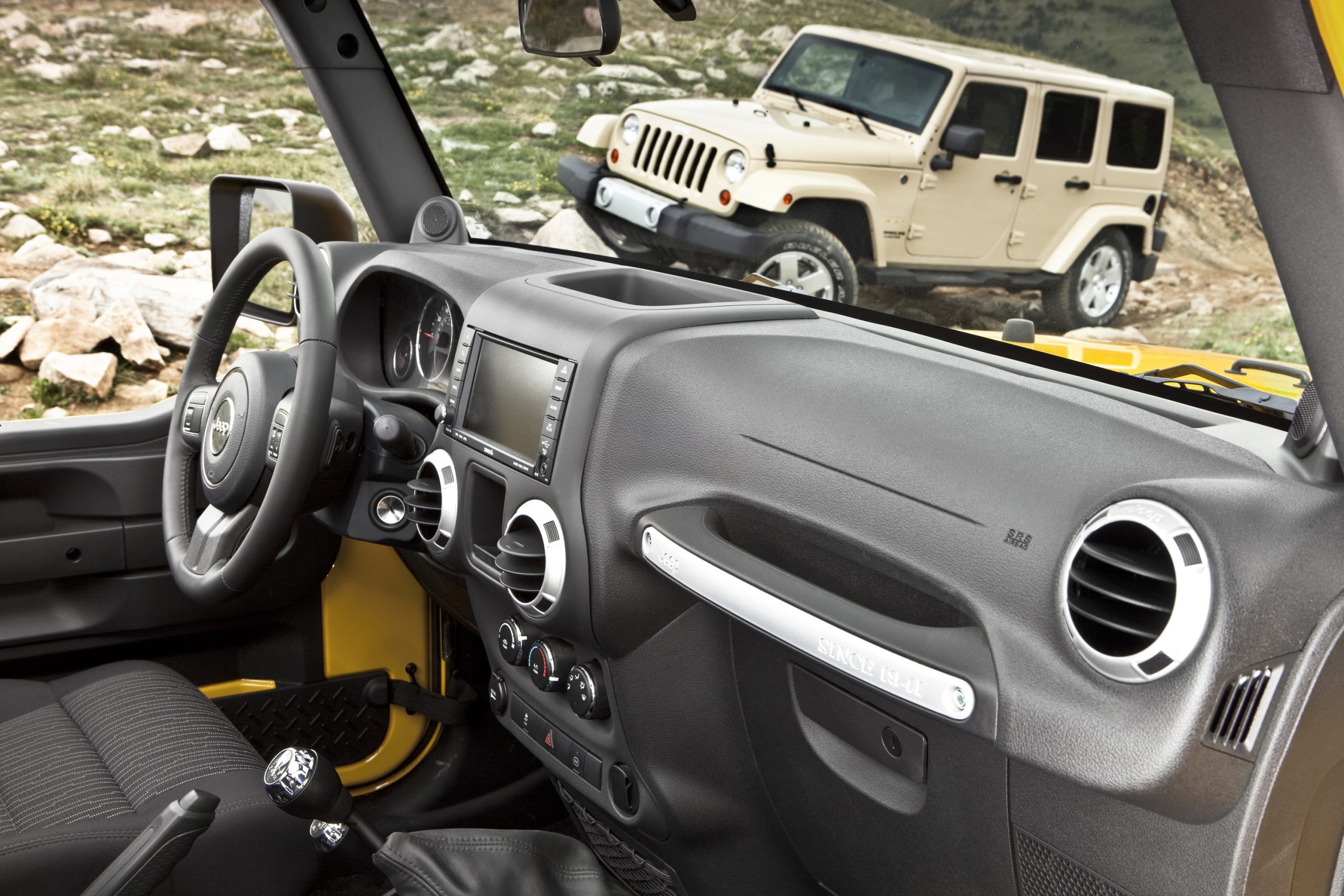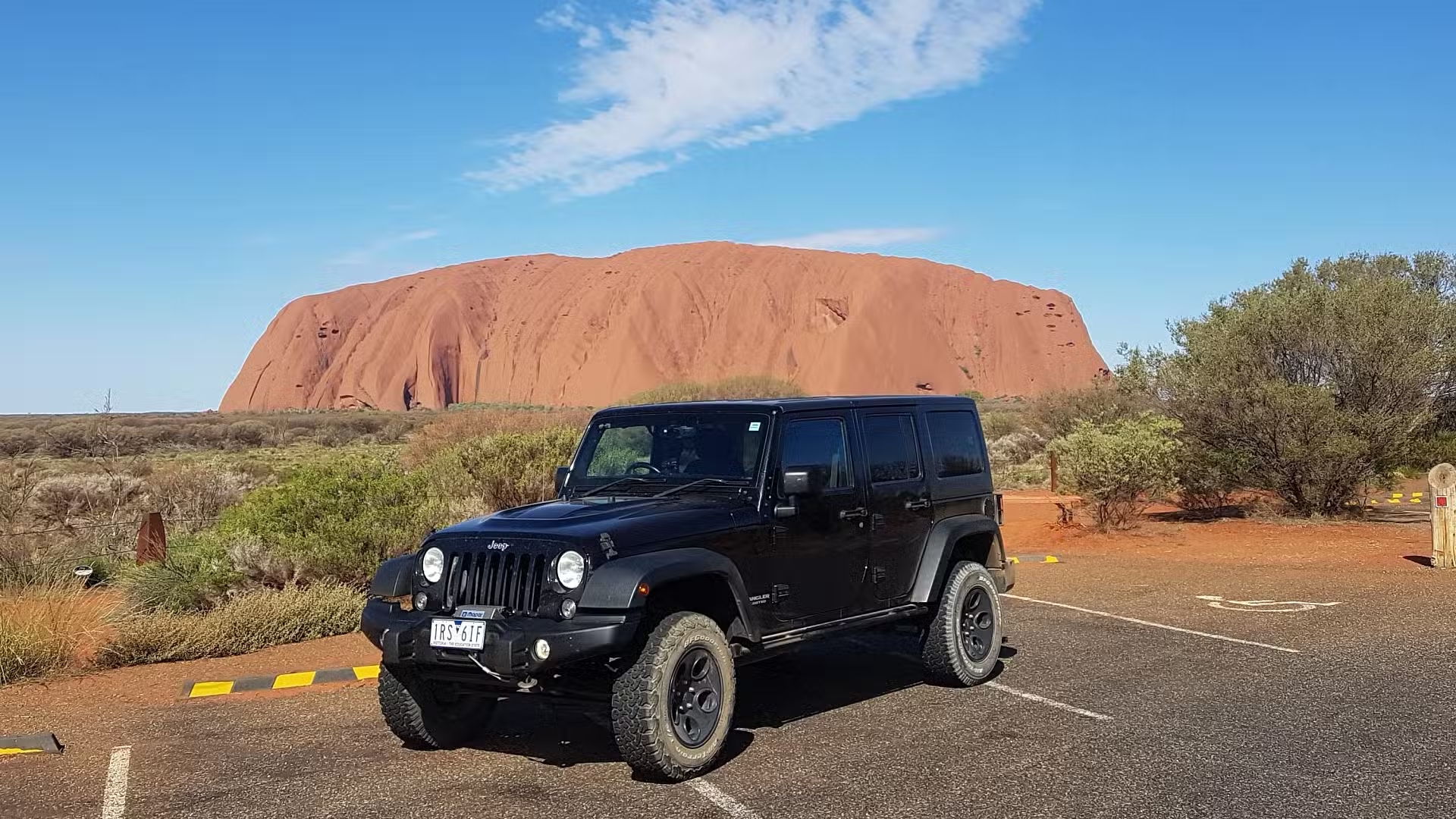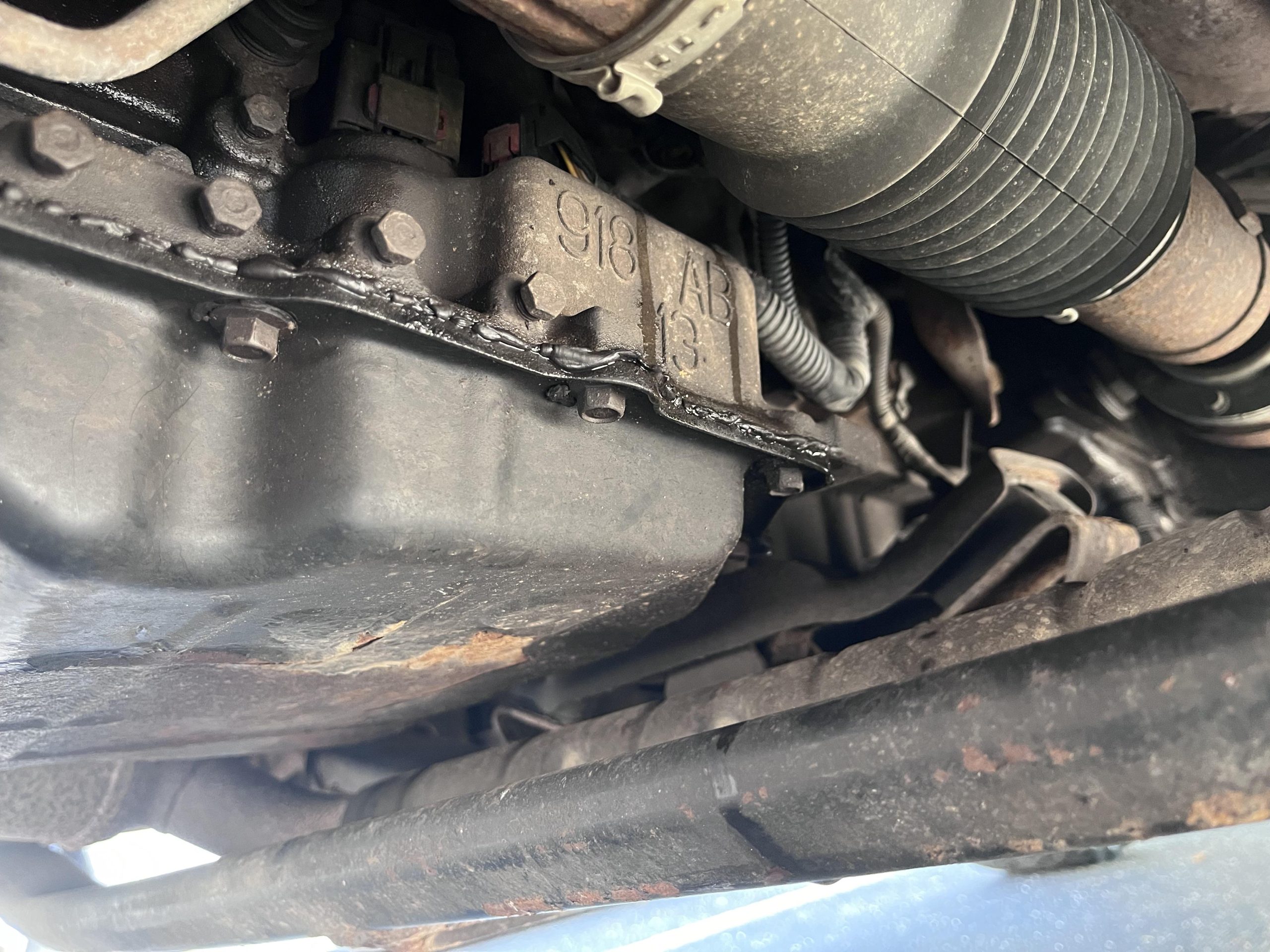Jeep Wrangler Generations
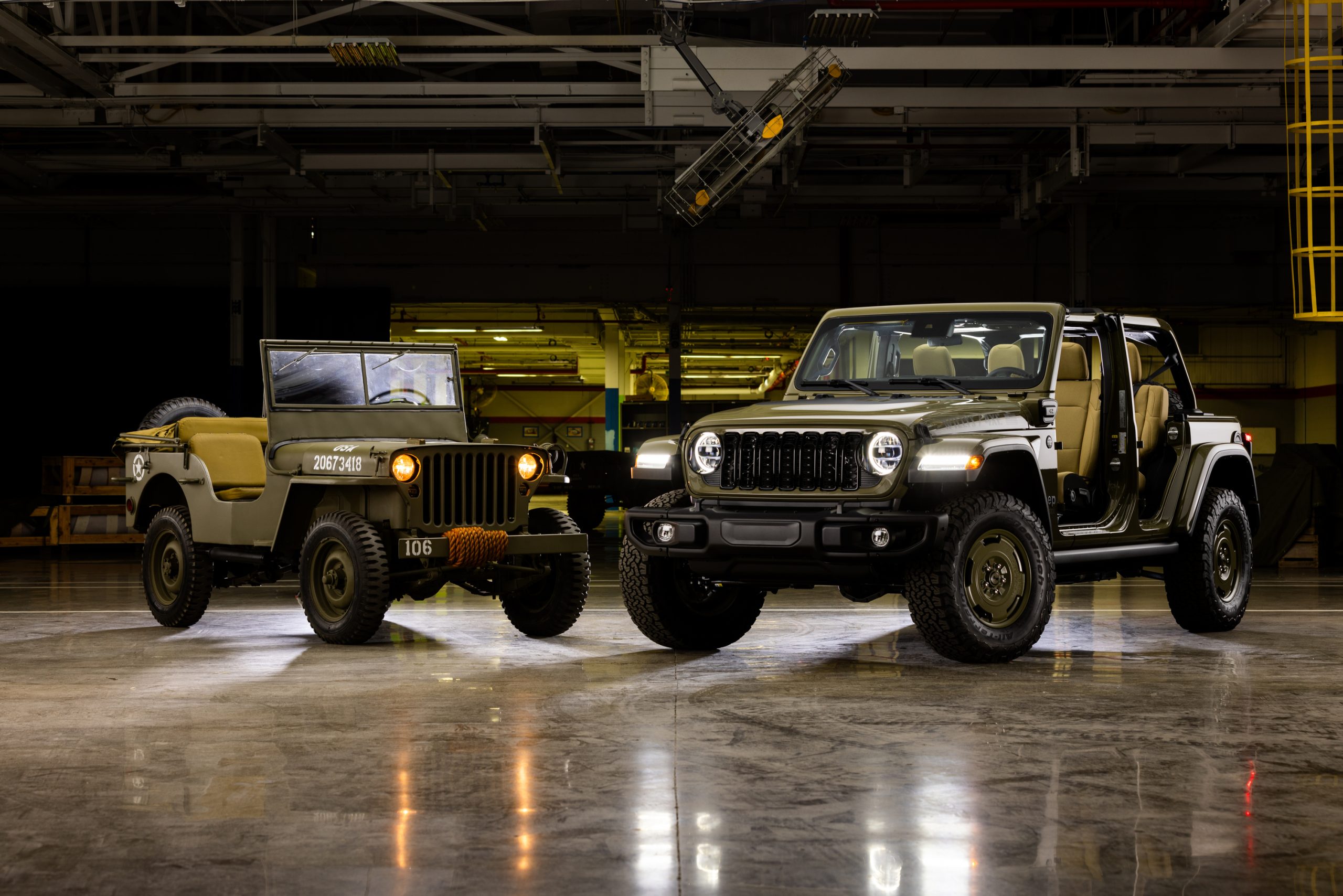
Via Stellantis
First Generation: Jeep Wrangler (YJ) – 1986 to 1995
Read the YJ Buyer’s Guide here
The first-generation Jeep Wrangler (YJ) marked a shift from Jeep’s rugged, military roots to a more consumer-friendly design. Launched in 1986, it balanced off-road capability with improved comfort, attracting adventurers and casual drivers alike.
Second Generation: Jeep Wrangler (TJ) – 1996 to 2006
Read the TJ Buyer’s Guide here
The second-generation Jeep Wrangler (TJ) brought back the iconic round headlights and introduced coil-spring suspension, enhancing both ride comfort and off-road agility. Launched in 1996, it refined the Wrangler’s classic appeal while preserving its rugged capabilities.
Third Generation: Jeep Wrangler (JK) – 2006 to 2018
Debuting in 2006, the third-gen Jeep Wrangler (JK) redefined adventure with a larger, more versatile design. This era introduced the four-door Unlimited model, making the Wrangler a family-friendly option while preserving its legendary off-road prowess and open-air freedom.
Fourth Generation: Jeep Wrangler (JL) – 2018 to Present
Launched in 2018, the fourth-generation Jeep Wrangler (JL) combines modern tech with classic Jeep DNA. Enhanced safety, improved aerodynamics, and upgraded powertrains make it more efficient and comfortable, all while delivering the unmatched off-road experience Wrangler enthusiasts expect.
Read the JL Buyer‘s Guide here
History & Overview of the JK Jeep Wrangler
The Willys MB, an iron workhorse that played a crucial role during World War II, laid the foundation for the Jeep Wrangler’s heritage in 1941. Jeep’s reputation as the go-anywhere vehicle of choice was cemented in 1945 when the civilian CJ (Civilian Jeep) series was inspired by their unmatched ruggedness and off-road capabilities.
Via Top Gear
In 1986, Jeep introduced the Wrangler name with the YJ generation. Jeep designed the YJ to combine off-road capability with on-road comfort, incorporating a wider track and rectangular headlights, which marked a controversial departure from the iconic round lights of the CJ. Despite initial resistance from Jeep purists, the YJ offered improved handling and ride quality, broadening the Wrangler’s appeal beyond hardcore off-roaders.
Via Reddit
In 1997, the TJ generation again used round headlights, which sent a thrill through the hearts of enthusiasts and marked a significant engineering leap forward. Its coil-spring suspension, borrowed from the Jeep Grand Cherokee, made the Wrangler ride much better, as well as more competent off-road. The TJ also introduced the Rubicon trim for the most hardcore enthusiasts, with locking differentials, heavy-duty axles, and upgraded tires.
Via Motortrend
Introduced in 2007, the Wrangler JK marked the most dramatic evolution at the time. Bigger and more refined, it premiered the Unlimited model with four doors that expanded the versatility of the Wrangler for families and overlanding enthusiasts. The JK introduced modern conveniences such as electronic stability control and improved safety features while still retaining Jeep’s legendary off-road DNA intact.

Via Cars & Bids
It came in many trims and configurations, with the JK being among the most popular and best-selling generations of Wrangler, cementing its position as an off-road icon that is usable daily.
Specifications
The Jeep Wrangler JK brought significant updates over the TJ, including a wider, more robust frame, enhanced safety features, and a newly available four-door model. These changes expanded the Wrangler’s appeal, improving on-road comfort while retaining off-road prowess, setting a new standard for versatility in the Wrangler lineup.
Engine
Via Motortrend
The Jeep Wrangler JK offered two primary engine options: a 3.8-liter code name EGH V6 in 2007-2011 models produced 202 horsepower. This engine is generally considered underpowered, especially for the heavier Unlimited models. Despite producing 10 more horsepower than the AMC inline six, the increased weight of the JK results in a lower power-to-weight ratio, leading to a sluggish driving experience.
| Engine | EGH | ERB |
| Bore x Stroke | 3.78 in x 3.43 in | 3.78 in x 3.27 in |
| Displacement | 3.8 L | 3.6 L |
| Compression Ratio | 9.6:1 | 10.2:1 |
| Cylinders | 6 | 6 |
| Horsepower | 202 hp @ 5,200 rpm | 285 hp @ 6,400 rpm |
| Torque | 237 lb-ft @ 4,000 rpm | 260 lb-ft @ 4,800 rpm |
| Valve Configuration | OHV (Overhead Valve) | DOHC (Dual Overhead Cam) |
The more powerful 3.6-liter code name ERB, Pentastar V6 in 2012-2018 models, produces 285 horsepower. These engines provided improved performance and fuel efficiency compared to the previous generation, with the Pentastar significantly boosting acceleration and overall drivability for both two- and four-door models.
Body
The Jeep Wrangler JK maintained the iconic open-body style and rugged character of its predecessors while incorporating modern design elements. Introduced in 2006, the JK featured a wider stance and a reinforced chassis, providing improved stability and handling both on and off-road. This generation was available in both two-door and four-door configurations, with the four-door Unlimited model significantly increasing passenger and cargo space, making it more versatile for families and adventure seekers alike.
The JK also showcased a distinctive angular profile and prominent fender flares, enhancing its muscular appearance. The removable doors and roof remained, preserving the Wrangler’s signature open-air experience. Additionally, improved materials and construction techniques contributed to a quieter cabin while maintaining the vehicle’s robust nature. The JK’s design successfully blended classic Jeep aesthetics with modern functionality, ensuring it remained a favorite among enthusiasts while attracting a new generation of drivers.
Interior
The Jeep Wrangler JK’s interior combined comfort and practicality, appealing to a wider audience with its two- and four-door options. The redesigned cabin offered more space, supportive seats, and improved materials, enhancing the driving experience for both off-road and daily use.
Via El Cuarentarrevoluciones
Modern amenities like power windows, air conditioning, and upgraded sound systems were introduced, along with optional leather upholstery and navigation systems, adding a touch of luxury. Despite these comforts, the JK retained its rugged essence with durable, washable surfaces, ensuring it could withstand mud and dust while embodying the true spirit of Jeep.
Things to Look For
Given that the latest models of the Jeep Wrangler’s JK generations are not even ten years old, it’s still possible to find a used vehicle with low mileage, potentially even a one-owner vehicle. Therefore, if you diligently conduct a thorough mechanical inspection of the car, scrutinize maintenance records, and confirm the resolution of any recalls, you can make a relatively safe purchase.
Model Year
From 2006 to 2018, the Jeep Wrangler JK was available in various trims and special editions, each offering unique features and equipment levels. The base model started as the Wrangler, with additional trims such as the X, Sahara, and Rubicon catering to different preferences.
In 2007, the Wrangler X hit the showrooms, providing a more off-road-focused package with enhanced capabilities. The Sahara trim, known for its more refined interior and added comfort features, appealed to those seeking a balance of ruggedness and livability. The Rubicon was the ultimate off-road variant, featuring heavy-duty axles, locking differentials, and an upgraded suspension for serious trail enthusiasts.
Via Drive
Special editions also emerged throughout the JK’s production, including the Wrangler Unlimited Sahara and Rubicon 10th Anniversary editions, which offered unique styling cues and enhanced features. These variants allowed buyers to tailor their Wrangler JK to suit their needs, from daily driving to extreme off-roading adventures.
Physical Condition
When assessing the physical condition of a Jeep Wrangler JK, it’s essential to conduct a thorough evaluation to avoid unexpected issues after purchase. While the JK is built for durability and off-road adventures, it’s not immune to wear and tear from rough driving conditions and exposure to the elements.
Start by inspecting the body for signs of rust, especially in critical areas like the wheel wells, rockers, and frame. The JK’s construction includes a unibody design, so any corrosion can lead to significant structural concerns. Look for scratches, dents, and paint damage, indicating off-road use or mishandling. Pay attention to the condition of removable components, like the doors and roof, as these can suffer wear from frequent use.
Via Reddit
Additionally, a detailed inspection by a professional is advisable to uncover hidden issues. Look for worn suspension components, especially if the vehicle has been heavily off-roaded. Problems with bushings, control arms, or track bars can affect handling and safety. Checking for leaks in the drivetrain and inspecting the integrity of the frame will also help identify past damage or repairs. Taking the time for a comprehensive pre-purchase inspection ensures that you make an informed decision, reducing the risk of acquiring a Wrangler JK that may need costly repairs or restoration.
Recalls
To fully understand the recall history of a Wrangler JK it’s a best practice to check its Vehicle Identification Number (VIN) on databases such as NHTSA.gov or Cars.com. The Wrangler JK series has faced several recalls, including a major one in 2016 for models produced between March 2, 2006, and August 13, 2010. This recall addressed a potential issue with the driver’s frontal airbag circuit, which could prevent the airbag from deploying in a crash, posing an increased risk of injury.
Taking time to research the recall background of these vehicles can help you assess their safety and reliability. It may also highlight specific model years with frequent issues, such as the 2010 Wrangler JK, which saw 10 safety recalls and 6 investigations by the NHTSA, suggesting that it might be a model year to approach with caution.
Service History
Reviewing the service records of a used Jeep Wrangler JK is crucial for ensuring its condition and reliability. This history can reveal past maintenance, any unresolved issues, and any significant repairs like engine or transmission work, giving you insight into how well it has been cared for. With the Wrangler JK’s reputation for durability but also known issues, a detailed service record check can help you avoid costly surprises and potentially problematic model years
Exhaust Smoke
The color and density of exhaust smoke can reveal various issues within the engine. For example, thick white smoke often signals a coolant leak, which can be a concern for JK Wrangler models, as this generation is prone to coolant system issues. Other types of smoke, like black or blue, might point to problems with the fuel injection, a faulty catalytic converter, or even an engine misfiring
Common Issues
Cooling System Leaks
Coolant leaks are common in JK Wranglers and can lead to overheating. Check for signs of leakage near the radiator or hoses.
Suspension and Steering
Worn suspension components or steering stabilizers typically cause the JK’s “death wobble,” a condition where the steering wheel shakes violently at certain speeds.
Electrical Issues
This generation is known for electrical problems, particularly with the TIPM (Totally Integrated Power Module), which controls many essential functions like the fuel pump and lights. Faults here can lead to intermittent failures.
Heater Core
The heater is prone to malfunction or not work at all because it tends to plug up. The most common cause of the heater core fault is not changing the coolant as specified by the manufacturer.
Engine Oil Leaks
Look for oil leaks around the engine, especially near the oil cooler and valve cover gaskets, as these can be problematic areas for JK Wranglers.
EVAP System Codes
Typically, a loose gas cap or a dried gasket that prevents proper sealing causes this issue. EVAP codes can also be caused by a faulty leak detection pump.
Water Leaks
Water leaking into the vehicle is fairly common across different Jeep generations, and the JK is no exception. The water usually leaks due to the dried black rubber weather stripping gasket around the door frame, which creates gaps between the Jeep’s metal body and allows water to seep in.
Recommendation
Via Exclusive Automotive Group
The Jeep Wrangler JK models have had known issues, but many of these were addressed in the later production years. As a result, models from 2015–2018 are generally considered more reliable options. For example, a 2015 Wrangler Rubicon with a factory hard top offers added durability and safety, as well as features like a rear window wiper, washer, and defroster.
Via Storm Jeeps
Hard tops also provide better temperature control and are typically more resistant to leaks than soft tops. You can find a low-mileage 2015 Wrangler in good condition priced around $20,000 to $25,000.

